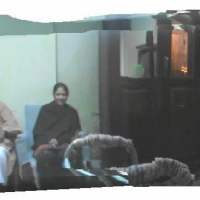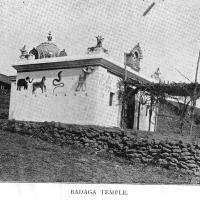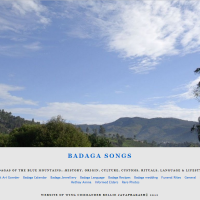On 25th July,2013, I had written the following post expressing my anguish about the ‘happenings’ in the YBA. The DISUNITY among us was exposed by the factions ridden association who indulged in all sort of shameful acts and made Badagas a laughing stock. One faction went to the High Court.
Now we get the news that the HC has ruled that there will be elections supervised by two eminent Badagas before 15 Jan 2014 (see the report at the end)
JP wrote on 25-7-2013 :
YBA – the NOT so Young Badaga Association, is in the news for all the wrong reasons. News papers report about the factional fights, lodging FIRs after skirmishes between groups etc thus making us – ‘the silent majority of Badagas’, to hold our heads in shame.
The so called ‘present’ body or the managing committee is not an elected one of the recent past. Not aware how many years back, they got ‘elected’. For obvious and not so obvious reasons they do not want to ‘leave their chairs’. but have called for ‘elections’ on the 12th Aug 2013.. The other faction claims that the ‘elections are not going to be free and fair and manipulations to elect the ‘chosen’ few have been already done.
It appears that the association that is expected to be APOLITICAL is precisely divided on ‘party’ lines.
Why can’t we have a proper election in which EACH and EVERY Badaga- from both genders – vote to select a ‘team’ that can represent all Badagas from all the Seemays and wherever they stay at present [I am including all the Badagas from around the globe]. If required, they can pay a nominal fee and become members of YBA so that they are eligible to vote.
In the interim, non controversial persons like Sundradevan I.A.S, T.Gopal, Entrepreneur [Mel Bikkatty] or B.Balasubramaniam, author of ‘Paame’ can take control of the affairs of YBA and take necessary steps to ‘conduct’ a proper but a sort of grand GENERAL ELECTIONS to select a truely representative managing committee of all Badagas. There could be many eminent Badagas [who may not be known to me] but can be included in the ‘interim arrangement’. I must confess that I have not spoken to the above mentioned persons about this but they came to mind spontaneously.
URI[jealousy] is in our DNA but can we not try for SIRI[happiness]? Can’t Badagas be ever UNITED and speak in one voice??
N BELLIE (LIC) commented:
Yes, I agree this idea. As one of the Members of YBA since 1986, and as the Mekku Nadu Seeami member, I expressed this idea in a meeting arranged by the YBA exclusively for Mekku Nadu Seemai members.
I told that the YBA should take proper initiative to form Root level branches of YBA. What I told is that YBA Branches should be launched in each and every Ward of a Village Panchayat, Town Panchayat, and Municipalities etc. The President and Secretaries of these branches are to be considered as the Executive Committee Members. The Executive Committee Members of the each Branches are to be the General Council Members of YBA, and this General Council Members should elect the Office Bearers of YBA.
You should go see what they’re up to. Maybe you’ll like their blog as much as they liked yours!
Hello Bellie,
May be your views are worth considering. As an insider, what exactly are the problems at YBA? What is their blog URL?? – JP
Two-member Panel to Hold Badaga Association Poll
The New Indian Express Monday, December 02, 2013 07:01 PM
A retired district judge and a former IAS officer from the Badaga community have been appointed as election commissioners to hold election to the executive committee of Young Badaga Association in the Nilgiris, in accordance with the TN Societies Registration Act, on or before January 15.
Disposing of a petition from the association by its secretary R Ravikumar, Justice KK Sasidharan appointed B Kali, District Judge, and Sundaradevan, IAS (both retired) as the election commissioners. Petitioner submitted that the association was formed for promoting development of members of Badaga community. The district, for purpose of local governance, was divided into four Seemals, namely, Purangadu, Thodanadu, Merkunadu and Kunda Seemal. The Seemals used to elect 5 executive members from each of the four Seemals, except Thodanadu Seemal, which will elect 6 members. The last election was held in 2008. Since there was no co-operation among the members, elections were not held thereafter. When two meetings were held in May 2013 to conduct the elections, the Nilgiris MLA Buddhichandran, claiming himself to be the president of the association, disrupted the meeting. Hence, the petitioner petition.
During the hearing the judge asked if it was possible to arrive at a consensus to conduct the elections, the MLA on October 9 appeared in person and expressed his readiness to conduct the election, headed by a member of the Badaga community. Accordingly, the duo was appointed to conduct the election, the judge said.



 Photos: Sreenivasa Murthy V.
Photos: Sreenivasa Murthy V.

















 Mookuthi
Mookuthi  Chinna
Chinna 






 ==
==



![Seemae [See'may] & Morae [Mo'ray] (relationship)](https://i0.wp.com/badaga.wordpress.com/files/2008/11/nakku-betta1.jpg?resize=200%2C200)








































